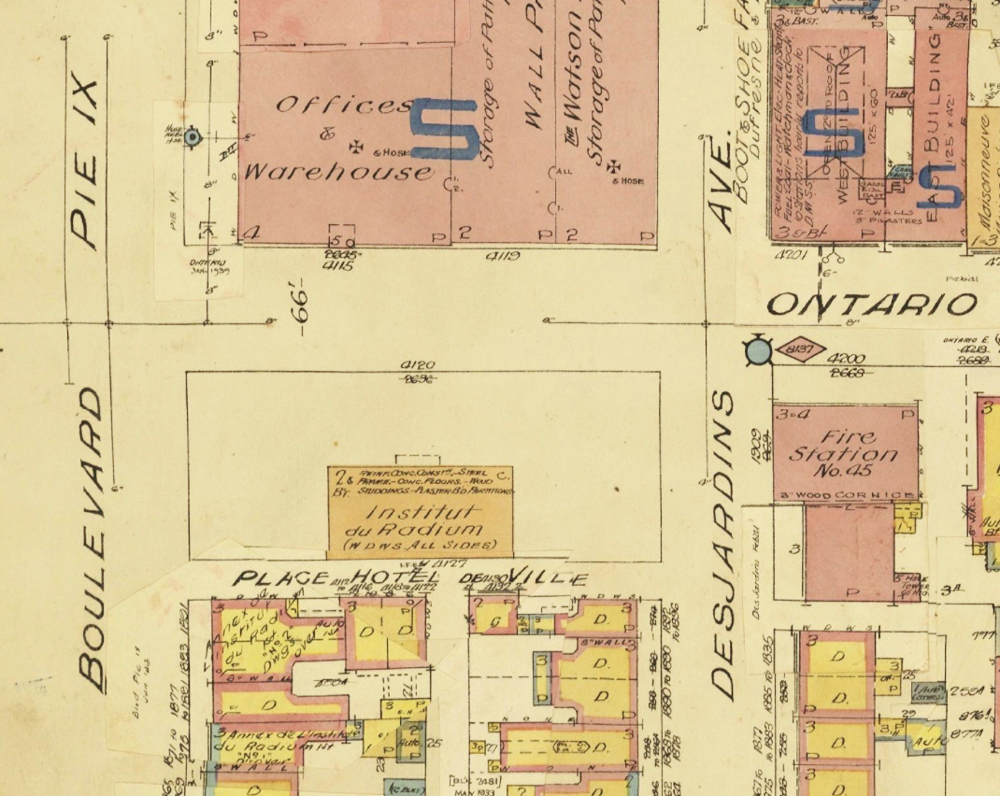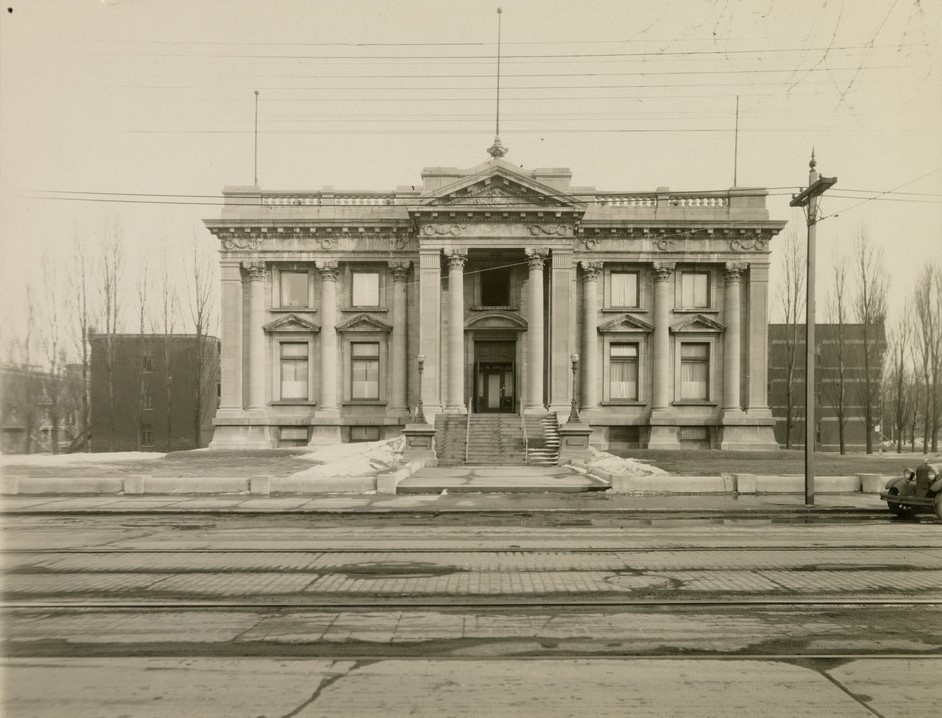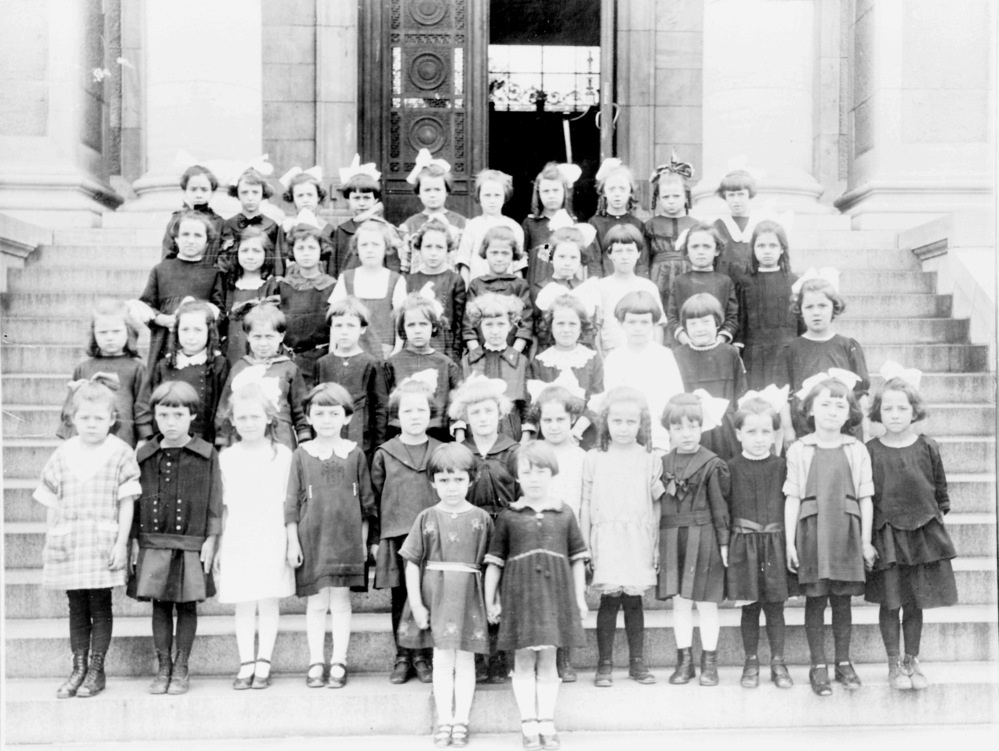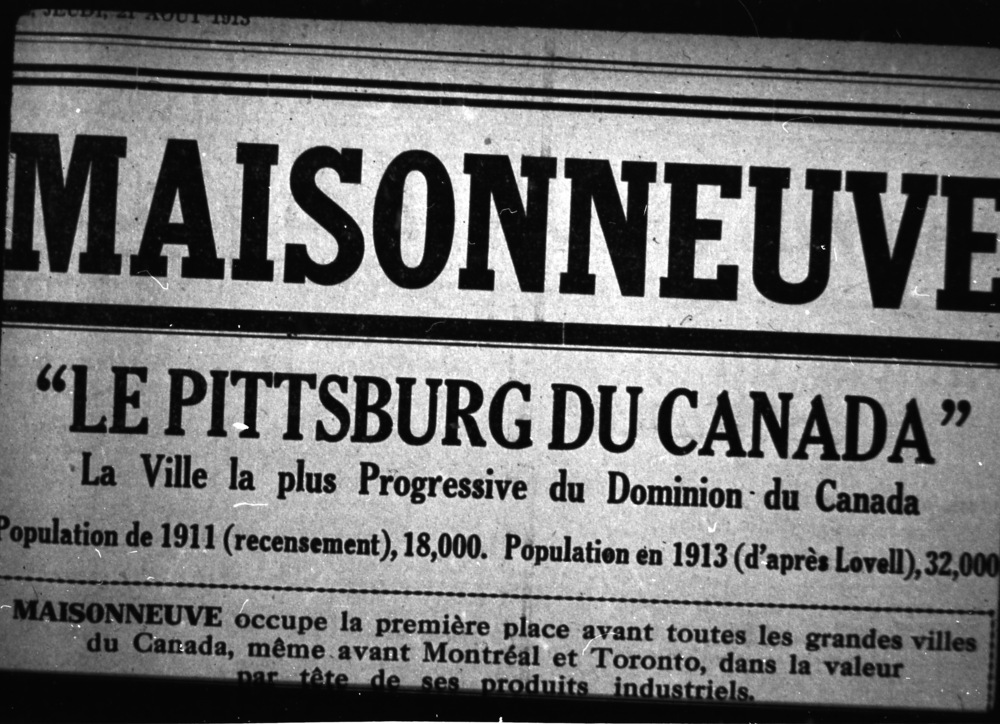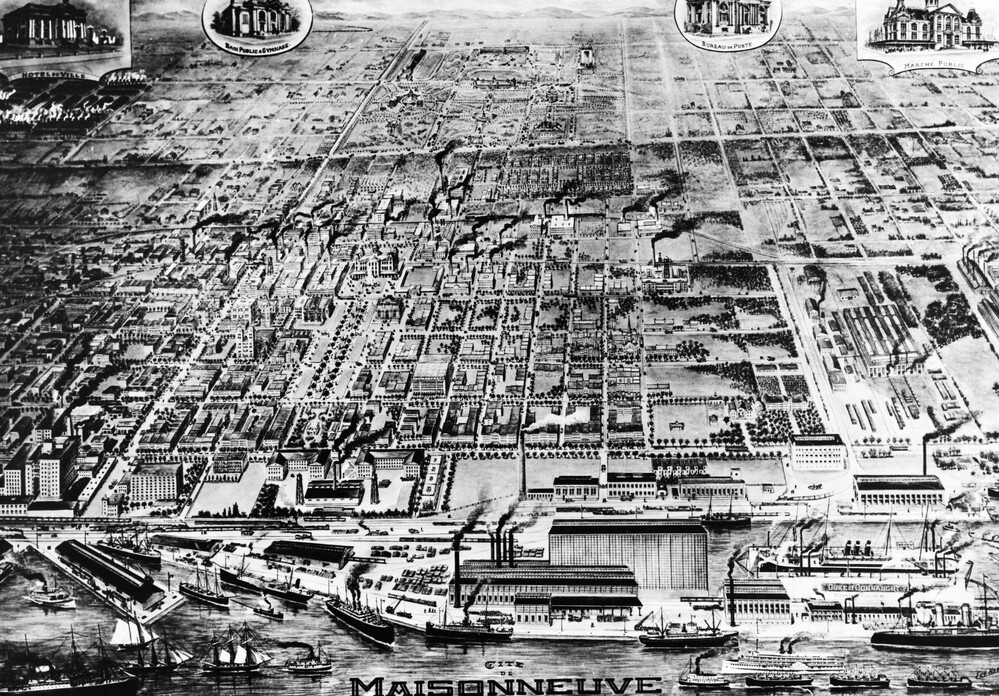Moving to Maisonneuve
To address issues of funding at Montréal’s Radium Institute, the provincial Government granted the centre $25,000 a year, on the condition that it officially became a hospital specialized in cancer treatment. This transformation was accompanied by a change in administration, which would now be headed by an independent corporation of the Université de Montréal. Very quickly, the management and supervision of care were entrusted to a religious community: the Sisters of Charity (or “Grey Nuns”) of Montréal. In the end, the Department of Public Assistance accepted to reimburse cancer treatments provided by the Institute to patients who could not afford them (wich were called “indigents”).
To address the overcrowding problem, the City of Montréal suggested the Institute move to Maisonneuve’s old Town Hall building, which had fallen in disuse since the merger of the two cities.
This magnificent Beaux-Arts style building stood at the heart of Maisonneuve’s working-class neighbourhood, in the eastern part of Montréal. Maisonneuve had first developed as an independent town in 1882. Tax exemptions had drawn many factories to it, quickly turning Maisonneuve into a prosperous industrial town. Based on the 1911 census, the price of manufactured products in Maisonneuve was the second most important in Québec, and ranking fifth in Canada.
Starting in the 1910s, a new generation of the local bourgeoisie launched a vast urban beautification project. In just five years, a new Town Hall, market, public bathhouse and fire station were built. But Canada’s economic downturn during the First World War put an end to the boom, striking a major blow to Maisonneuve’s finances. Bankrupted by crushing debt, the town ended up being annexed by Montréal in 1918. This change did not alter the makeup of Maisonneuve, which remained an industrialized working-class neighbourhood. For the Radium Institute, however, relocation to the eastern borough marked the beginning of a new era.


